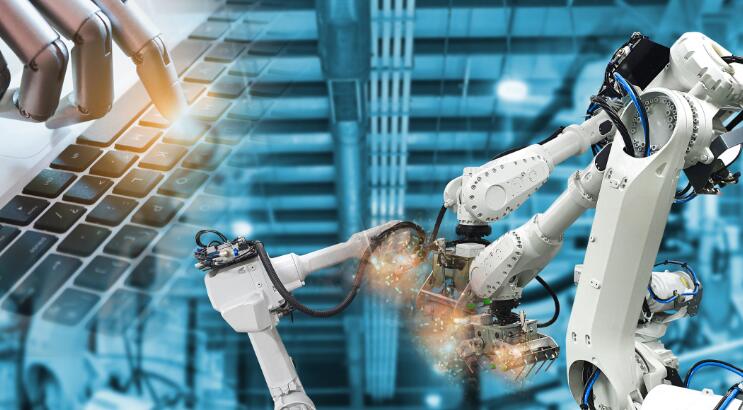Boosting Safety and Efficiency: The Role of Automation in the Food and Beverage Industry
In today’s fast-paced world, the food and beverage industry is under constant pressure to increase efficiency, ensure product quality, and maintain the highest safety standards. Automation has emerged as a game-changer, revolutionizing the industry by optimizing production processes, reducing human error, and ensuring that products meet stringent regulatory requirements. This article explores how automation is reshaping the food and beverage sector, enhancing both safety and operational efficiency.
Food safety is a top priority in the industry, as any contamination or quality issue can lead to serious health risks, product recalls, and damage to a brand's reputation. Automation plays a critical role in improving food safety in several ways:
Precision in Processing: Automated systems ensure that production processes are consistent and accurate. This precision reduces the risk of contamination due to human error, such as improper handling, incorrect ingredient measurements, or inconsistent cooking times.
Traceability: Modern automated systems can track every stage of the production process, from raw materials to finished products. This level of traceability ensures that any potential safety issues can be identified and addressed immediately. It also makes it easier to conduct recalls if necessary, as companies can quickly trace the source of any contamination.
Sanitation and Cleaning: Automation can also help improve hygiene. Automated cleaning systems, such as Clean-in-Place (CIP) technology, ensure that equipment is properly sanitized without manual intervention, reducing the risk of contamination and ensuring compliance with food safety regulations.
Automation significantly improves the overall efficiency of food and beverage operations by optimizing production processes and reducing bottlenecks.
Faster Production Rates: Automated machines and robotics can operate around the clock without fatigue, leading to higher production rates. This is especially important in meeting the growing demand for food products in both local and global markets. For instance, automated bottling or packaging systems can drastically increase throughput while maintaining consistent quality.
Reduced Waste: Precision automation systems help minimize raw material waste by ensuring that products are processed accurately. For example, automated slicing machines can cut food products with high precision, reducing waste and maximizing yield.
Energy and Resource Management: Automated systems can monitor and optimize energy consumption, reducing operational costs. Smart automation tools can adjust equipment settings to conserve energy during low-demand periods or use predictive analytics to schedule maintenance, reducing downtime and improving the overall efficiency of operations.
One of the major advantages of automation in the food and beverage industry is its ability to maintain consistent product quality. Human error is often a factor in product variability, but automated systems ensure uniformity in every batch.
Standardization: Automated systems can perform repetitive tasks with the same level of accuracy each time, ensuring that products meet exact specifications for taste, texture, and appearance. This leads to higher customer satisfaction and brand loyalty.
Real-Time Monitoring and Adjustments: Automation technologies, such as sensors and artificial intelligence (AI), allow for real-time monitoring of production conditions. Automated systems can make instant adjustments to temperature, humidity, or ingredient ratios, ensuring optimal conditions and preventing defects.
Quality Assurance: Vision systems and AI-powered algorithms can inspect products on the production line, identifying defects or inconsistencies that would be difficult to detect manually. This leads to fewer defective products reaching the market, ultimately reducing returns and complaints.

While automation may reduce the need for manual labor in some areas, it can enhance worker safety and allow employees to focus on higher-value tasks.
Reduction in Hazardous Tasks: Automation can handle dangerous or repetitive tasks, reducing the risk of worker injuries. For example, automated systems can manage tasks such as heavy lifting, operating high-temperature machinery, or working with hazardous chemicals.
Job Enrichment: As automation takes over routine tasks, workers can focus on more complex and rewarding responsibilities. This can lead to greater job satisfaction and improved workforce retention.
Collaborative Robots: In some cases, automation doesn’t replace human workers but instead works alongside them. Collaborative robots, or “cobots,” assist workers in tasks that require precision or strength, enhancing human capabilities and improving efficiency.
In addition to boosting efficiency and safety, automation can also support the food and beverage industry’s sustainability efforts.
Resource Optimization: Automation systems can monitor and reduce the use of water, energy, and raw materials. For example, automated water usage systems can ensure that water is used efficiently in cleaning and processing operations, while energy management systems can reduce power consumption during non-peak hours.
Waste Reduction: Automation helps reduce food waste by ensuring precise measurements and processing. In addition, automated systems can help identify and redirect off-spec products to be repurposed or recycled, minimizing overall waste.
Sustainable Packaging: Automated packaging systems can use eco-friendly materials and minimize the amount of packaging waste, contributing to the industry’s environmental goals.
Automation is transforming the food and beverage industry, offering significant benefits in terms of safety, efficiency, and sustainability. By improving product consistency, enhancing traceability, and optimizing production processes, automation ensures that companies can meet the growing demands of consumers while maintaining the highest standards of quality and safety. As technology continues to evolve, the role of automation in the industry will only become more integral, driving further innovation and improvements in how food and beverages are produced, packaged, and delivered.
Our hours